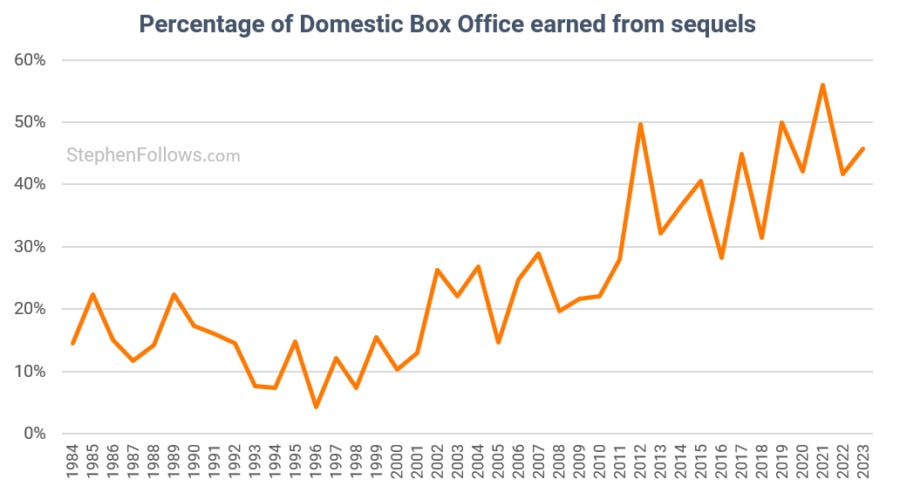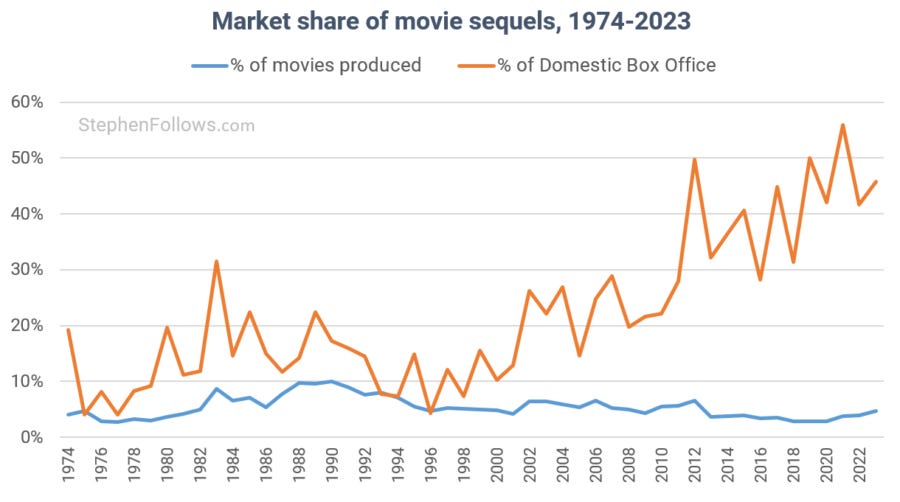Are there more movie sequels than there used to be?
Last week, I examined the origin of movie scripts, showing that Original Screenplays still account for over half of all movies — the same figure it was forty years ago.
This prompted a few readers to write in and ask whether there is now a greater prevalence of movie sequels.
I'm glad you asked.
Are movie sequels on the rise?
Turning to the same dataset of all movies released in US cinemas, we can see that sequels have been taking a smaller percentage of the production figures over the past forty years, albeit with a small rise over the past five years or so.
Sequels were twice as frequent in the late 1980s than in the 2010s, if we use production figures as our measure.
Errr... what?
Those of you who read last week's article will remember that production figures are not the only measure of 'market share'.
Not all movies are created equal, and not all command the same attention from us and the media. Therefore, our sense that sequels are on the rise is probably better measured by looking at the box office than by just the number of movies made.
And indeed, we do see the pattern we were most likely expecting to see - a dramatic rise.
In the 1990s, just 11.7% of the domestic box office went to sequels, whereas in the ten years between 2014 and 2023, it was an average of 41.7%.
Let's end by putting those two charts together and marvel at the dramatically different stories they tell.
In 2023, despite sequels only making up under 5% of the movies released, they collected 45.8% of the cinema box office.
Notes
The core of today's data came from Opus Data / The-Numbers, with additional data from IMDb, OMDb, Wikipedia, and my own datasets. The hard work of determining which movies were sequels was done by the talented folks at Opus Data. It covers 58,900 feature films, released in the US between 1974 and 2023, inclusive. Box office here refers to the Domestic Box Office, i.e. the US and Canada.





